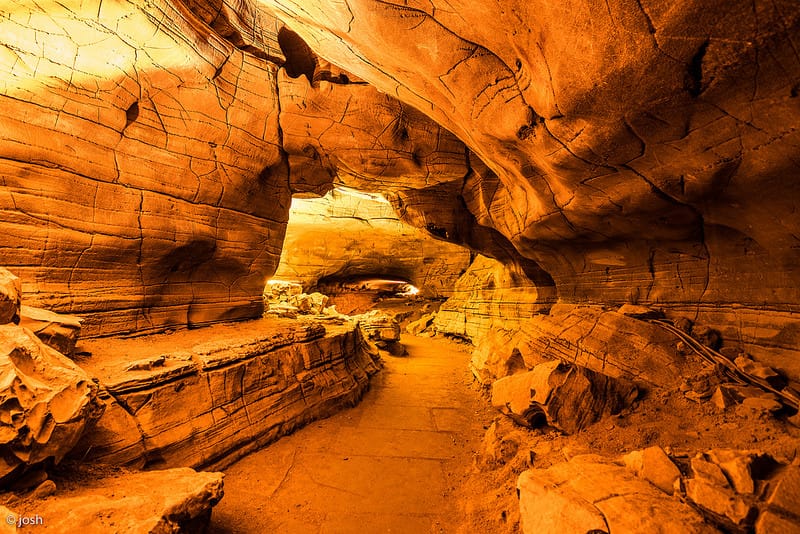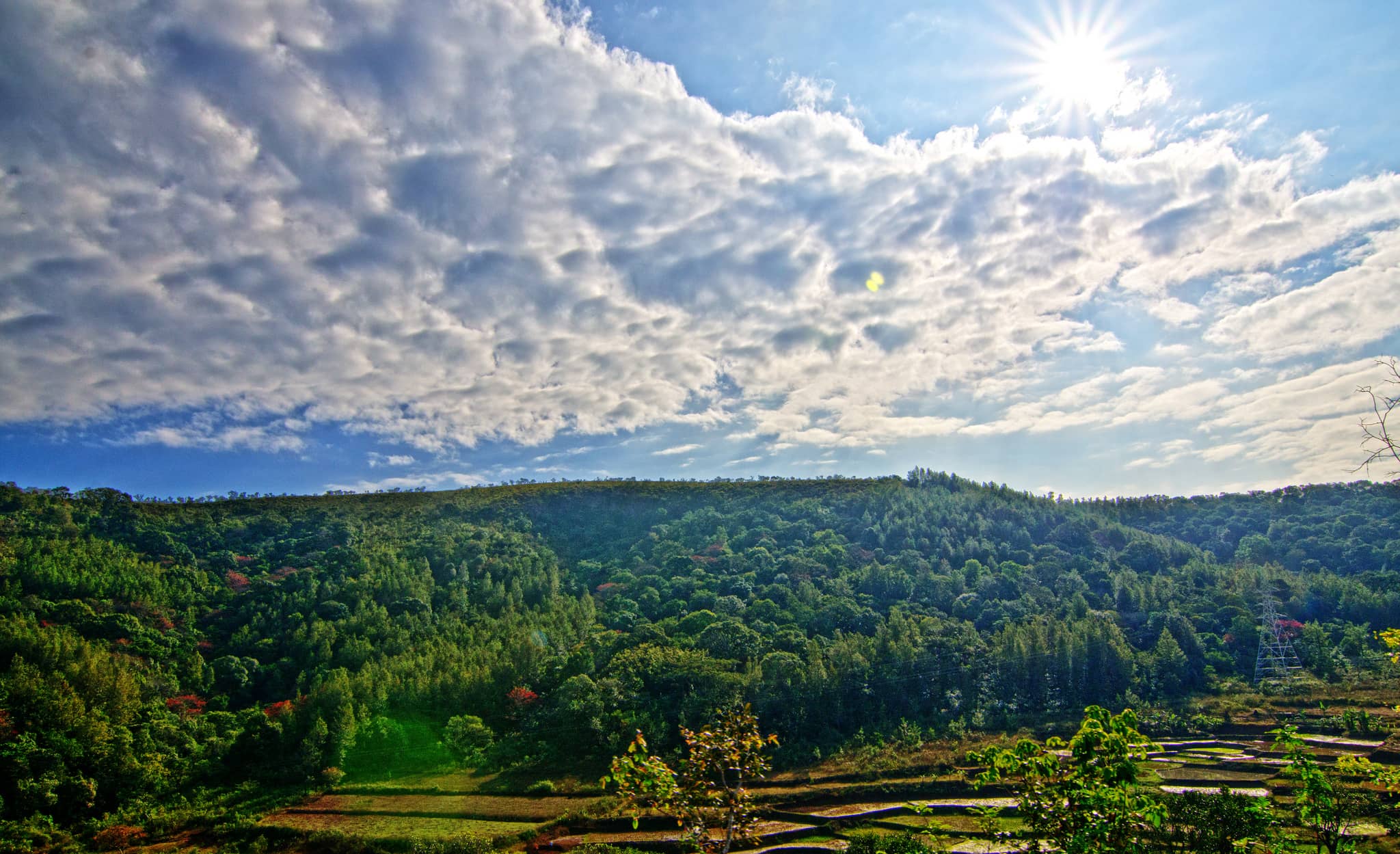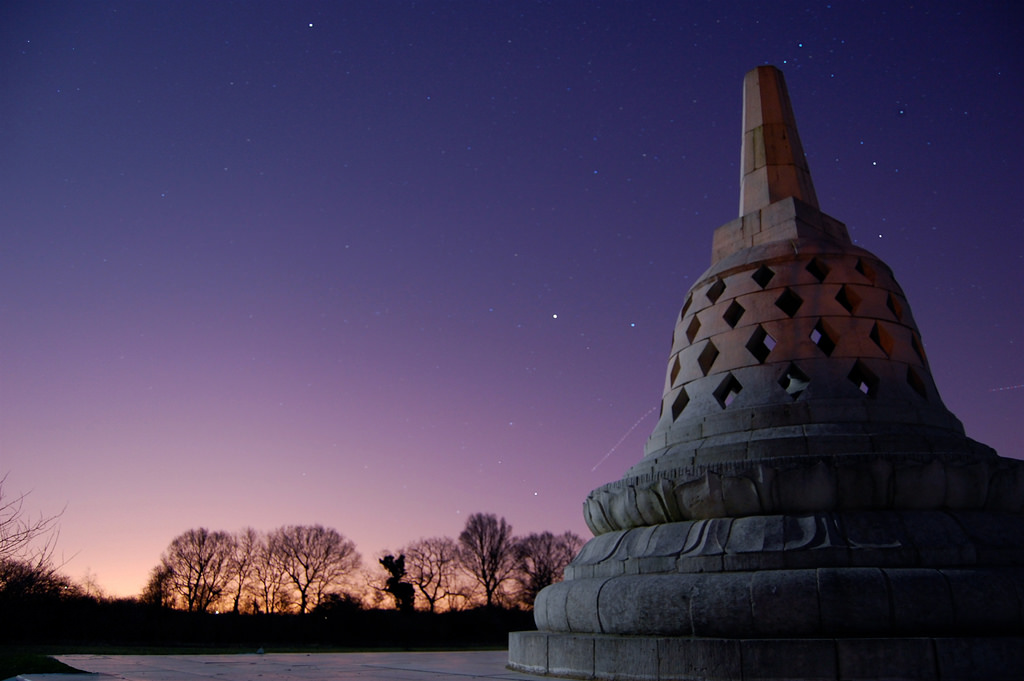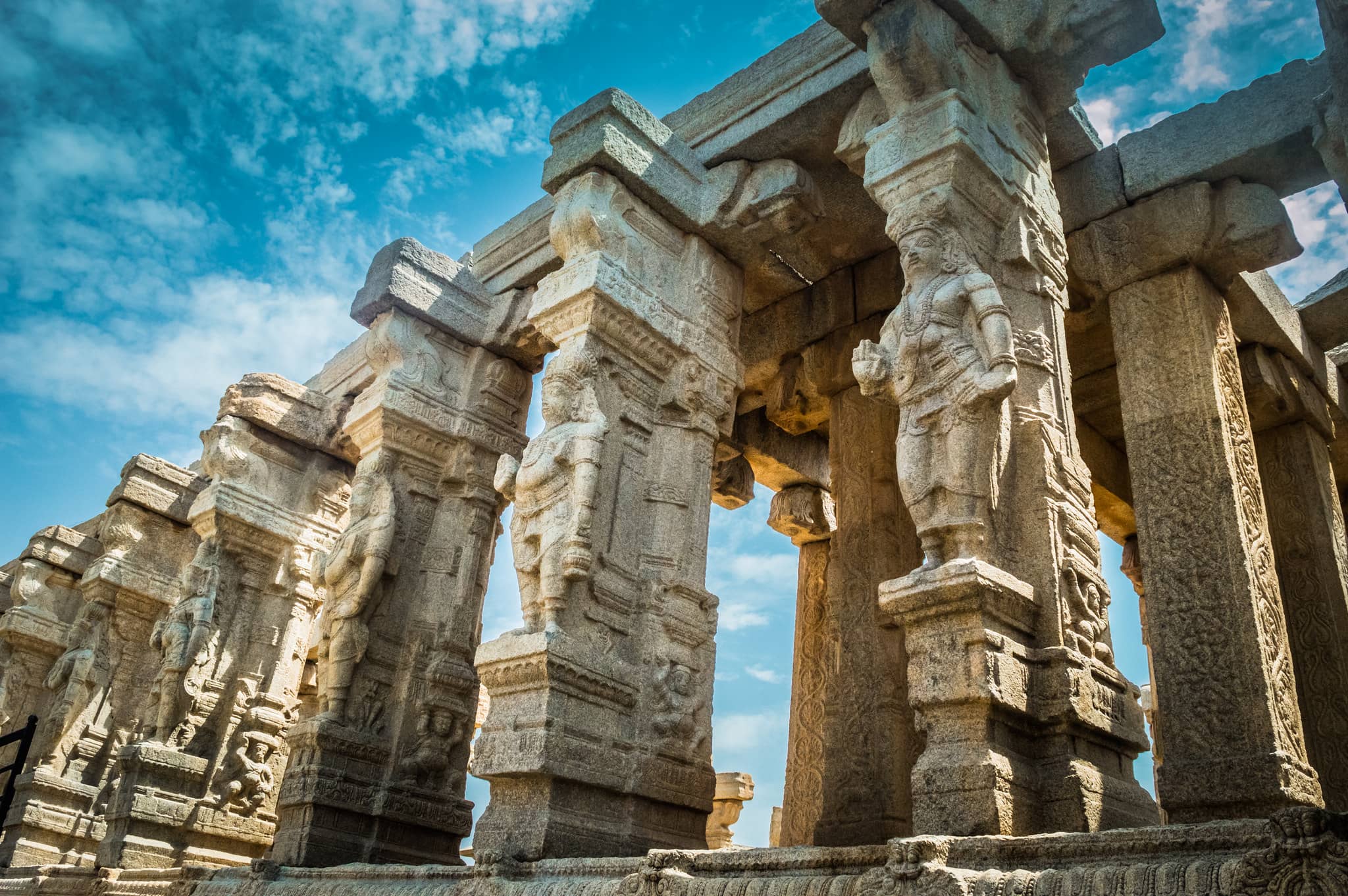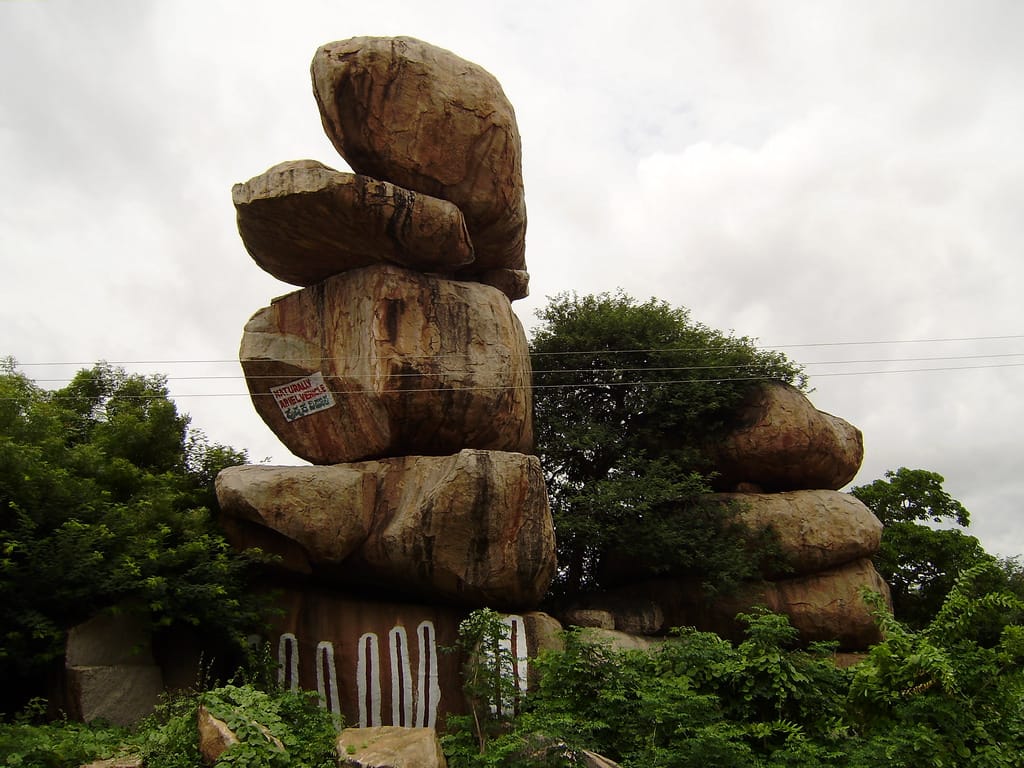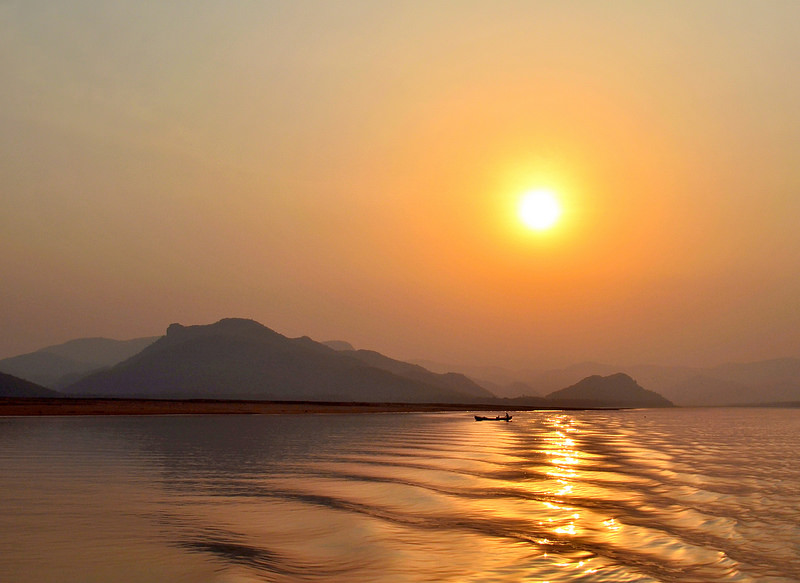Bagan is an ancient city in central Myanmar, located southwest of Mandalay along the Ayeyarwady River. It’s famous for the Bagan Archaeological Area, which has over 2,000 Buddhist monuments. Key sites include the Ananda Temple, built in 1091, and the large Dhammayangyi Temple from the 12th century. Old Bagan also features impressive structures like the Thatbyinnyu Temple, one of the tallest in the city, and Nathlaung Kyaung, a Hindu temple. The Bagan Archaeological Museum displays important religious artifacts, while the Shwezigon Pagoda is a golden temple from the 11th century. Nearby, Htilominlo Temple and the red Sulamani Temple with painted Buddha statues stand out. Modern settlements like New Bagan and Nyaung-U are near these ancient sites, and to the southeast is Mt. Popa National Park, home to an extinct volcano.
places to visit in Bagan
Ananda Temple

Ananda Temple is a large and impressive Buddhist temple built in 1105. Known for its remarkable architecture, the temple features stunning sculptures and detailed paintings. It is one of the most significant religious sites in Bagan, drawing visitors from around the world. The temple is famed for its beautiful design, which combines various architectural styles. The inner sanctum houses several Buddha images, and the temple’s atmosphere is serene and majestic.
Shwezigon Pagoda

Shwezigon Pagoda, built in the 11th century, is a monumental Buddhist structure with a massive golden stupa. The pagoda is renowned for its intricate carvings and rich historical significance. It is one of the most revered religious sites in Bagan. The stupa is covered in gold leaf, adding to its splendor. Pilgrims and visitors alike come to admire the peaceful surroundings and the pagoda’s beauty. The structure is an important symbol of the spread of Buddhism in Myanmar.
Dhammayangyi Temple

Dhammayangyi Temple is a grand 12th-century Buddhist temple, known for its impressive scale and intricate details. The temple features multiple shrines, walkways, and numerous Buddha statues. Its architecture is characterized by massive walls and an imposing central structure. It is one of the largest temples in Bagan, offering a sense of awe and reverence. Visitors often marvel at its robust construction and ancient carvings. The temple remains a significant part of Bagan’s cultural heritage.
Thatbyinnyu Temple

Thatbyinnyu Temple is a towering 12th-century Buddhist temple, standing at 60 meters tall. It is one of the tallest temples in Bagan and is renowned for its elaborate architectural details. The temple features receding terraces that add to its grandeur. Visitors can explore the temple’s serene atmosphere and enjoy sweeping views of the surrounding plains. The temple’s intricate carvings and statues make it a must-see for those exploring Bagan. Its height and beauty make it one of the city’s iconic landmarks.
Gawdawpalin Temple

Gawdawpalin Temple, dating back to the 12th century, is one of the largest Buddhist temples in Bagan. The temple is known for its towering pagoda and four golden Buddha statues. It features beautiful carvings and intricate architectural details. The temple stands as a testament to the grandeur of Bagan’s ancient architecture. The serene surroundings and the temple’s striking presence make it a key highlight for visitors. Its large scale and historical importance make it a revered religious site.
Popa Mountain National Park
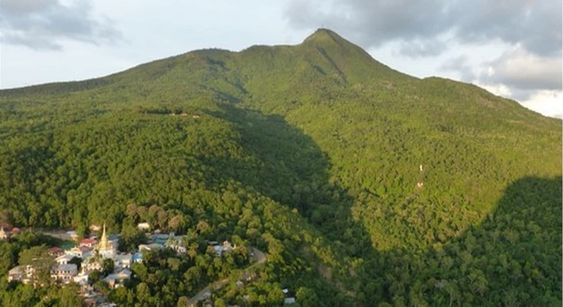
Popa Mountain National Park, located in Kyaukpadaung Township, covers an area of 129 square kilometers. The park is home to diverse flora and fauna and is a popular destination for nature enthusiasts. Established in 1989, the park includes the extinct volcano of Mount Popa. Visitors can enjoy scenic views of the surrounding area and explore the park’s natural beauty. The park’s rich biodiversity and peaceful environment make it a unique spot for hiking and wildlife watching. It is also known for the Popa Taungkalat monastery perched on the mountain.
Shwesandaw Pagoda

Shwesandaw Pagoda, built in 1057 AD, is a Buddhist pagoda known for its five terraces. These terraces offer panoramic views of Bagan, making it a popular spot to watch the sunset or sunrise. The pagoda’s architecture is simple yet striking, and it is a significant historical landmark in the region. Pilgrims often visit to offer prayers and enjoy the scenic views. The terraces provide a great vantage point to appreciate the vast expanse of Bagan’s ancient temples. The pagoda’s golden hue enhances its beauty in the sunlight.
Sulamani Temple
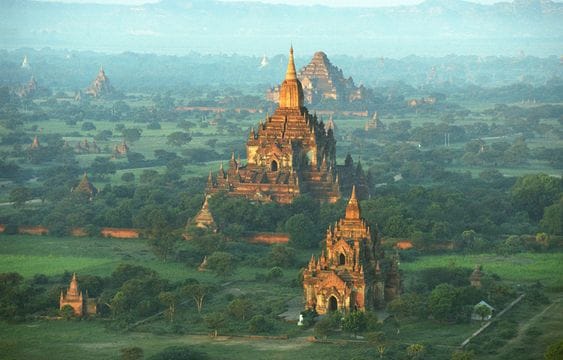
Sulamani Temple, built in the 12th century, is a stately stone Buddhist temple in Bagan. Known for its scenic views, it is one of the most visited temples in the area. The temple is famous for its elaborate carvings and impressive statues. Visitors are drawn to its grandeur and peaceful ambiance, which make it a great spot for reflection. The surrounding landscape, dotted with other temples, provides an unforgettable experience. Sulamani Temple’s historical significance and architectural beauty make it a key part of Bagan’s cultural heritage.
Htilominlo Temple
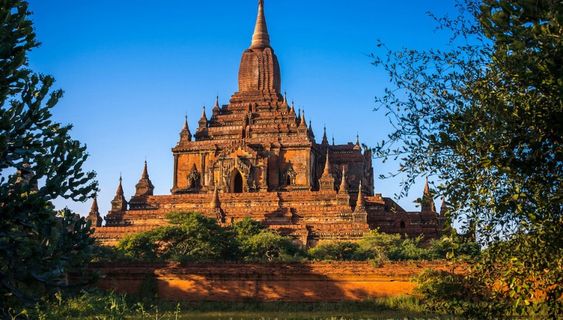
Htilominlo Temple is a red-brick Buddhist temple constructed in 1211. It is known for its impressive three-story structure and the four Buddha statues housed within. The temple is a perfect example of Bagan’s ancient architectural style, with intricate carvings and beautiful details. It stands as one of the most significant and well-preserved temples in the region. The temple’s vibrant red bricks add to its unique charm, contrasting with the golden hues of nearby structures. Visitors come to admire its beauty and historical importance.
Manuha Temple
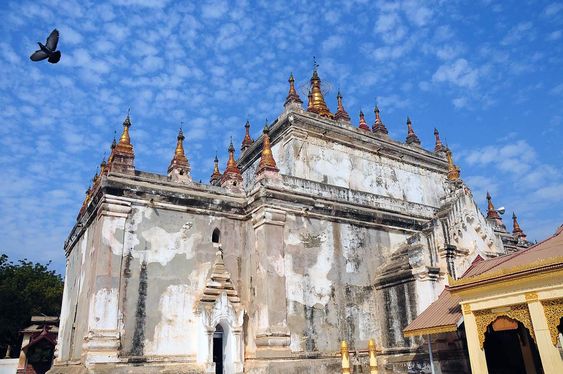
Manuha Temple, dating back to 1067, is known for its three seated Buddha figures and enormous reclining Buddha statue. The temple’s design and sculptures depict important scenes from Buddhist teachings. It is one of the older temples in Bagan and remains an important site for pilgrims. The temple’s large, reclining Buddha is particularly noteworthy, offering a sense of tranquility and reverence. The temple’s simple yet powerful architecture reflects the devotion of its creators. It is a serene place to explore Bagan’s religious history.
Bupaya Pagoda
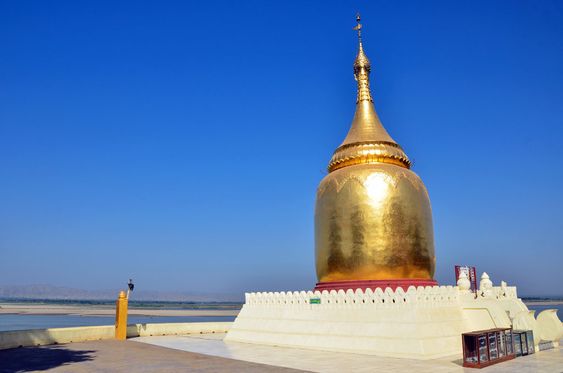
Bupaya Pagoda is a sacred, bulb-shaped pagoda located on the banks of the Ayeyarwady River. Originally built by the 3rd King of Pagan, it has been restored over the years. The pagoda’s unique shape and location near the river make it a distinctive landmark. It holds religious significance and is a popular place for both pilgrims and visitors. The views of the river from the pagoda’s base add to its allure. Bupaya Pagoda remains a central part of Bagan’s spiritual landscape.
Shwegugyi Temple

Shwegugyi Temple, built in the 12th century, is a small but significant Buddhist temple in Bagan. It is known for its ancient inscriptions and peaceful surroundings. The temple offers beautiful views of the nearby temples and landscape, making it a great place to reflect. Its simple yet elegant design is characteristic of the era in which it was built. Shwegugyi Temple remains an important site for both history enthusiasts and those seeking a quiet place to meditate. Its location adds to its charm, offering a glimpse into Bagan’s past.
Nanpaya Temple
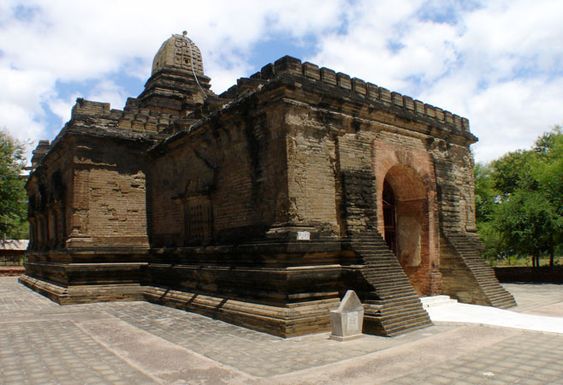
Nanpaya Temple is a historic brick and stone temple known for its detailed interior wall carvings. The temple features depictions of Hindu gods, reflecting its connection to Hinduism before the spread of Buddhism in Bagan. The intricate carvings on the temple’s walls are a testament to the craftsmanship of the time. The temple’s design is simple but elegant, offering visitors a look into Bagan’s rich cultural history. It stands as a reminder of the region’s religious diversity before the dominance of Buddhism. Nanpaya Temple remains an intriguing site for visitors.
Dhammayazika Pagoda

Dhammayazika Pagoda is a Buddhist temple built in 1196, during the reign of King Narapatisithu. It features a circular design with three terraces and terra cotta tiles depicting scenes from the Jataka. The pagoda is located in Pwasaw village, offering visitors a peaceful setting for reflection. Its unique architecture sets it apart from other temples in Bagan, with its distinct round shape and detailed tile work. The pagoda remains a significant site for those interested in Buddhist history and art. Its serene location adds to its spiritual significance.
Lawkananda Pagoda
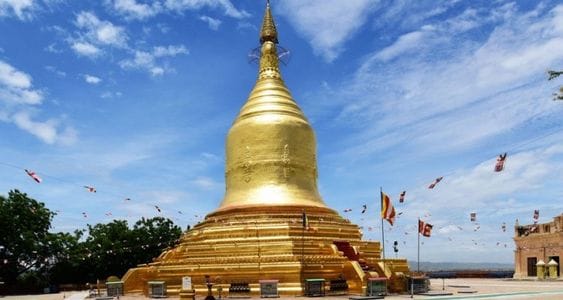
Lawkananda Pagoda is a tiered, gilded Buddhist pagoda built in the 11th century. It is known for housing a replica of Buddha’s tooth, making it an important religious site. The pagoda’s golden structure shines brightly, especially in the sunlight. It stands as a symbol of Bagan’s historical connection to Buddhism and religious devotion. The surrounding area is peaceful and offers views of the river and nearby temples. Lawkananda Pagoda continues to draw pilgrims and visitors seeking to experience its spiritual significance.
Bulethi
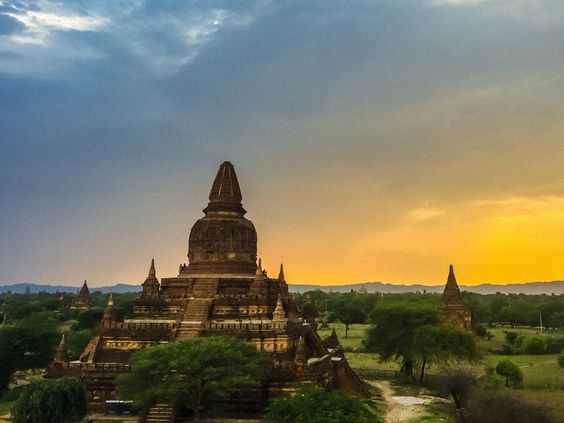
Bulethi is a hilltop temple offering expansive views of the surrounding plains and ancient structures. To reach the temple, visitors must climb a steep path, but the effort is rewarded with breathtaking views, especially at sunset. The temple is less crowded, making it an ideal spot for those seeking solitude and reflection. From the hill, visitors can see many of Bagan’s iconic temples scattered across the landscape. Bulethi’s location and scenic beauty make it a perfect place to appreciate Bagan’s ancient architecture. The temple provides a serene and quiet atmosphere, ideal for meditation.
Mahabodhi Temple
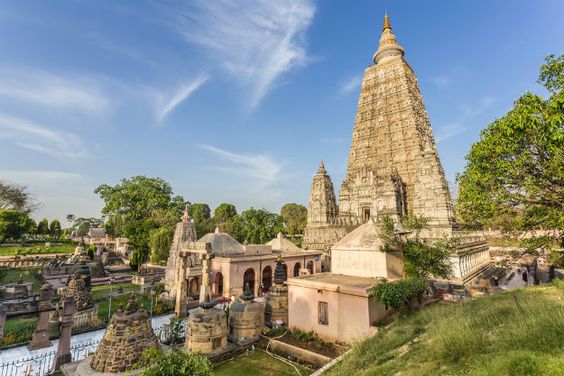
Mahabodhi Temple, built in the mid-13th century, is modeled after the Mahabodhi Temple in Bihar, India. It was constructed during the reign of King Htilominlo and is one of Bagan’s significant religious structures. The temple’s design closely mirrors that of the original Mahabodhi Temple, which marks the site where the Buddha attained enlightenment. Mahabodhi Temple stands as a testament to Bagan’s strong Buddhist heritage. The temple’s peaceful surroundings and historical importance make it a key site for pilgrims. It remains one of the finest examples of Bagan’s architectural excellence.
Tantkyitaung Pagoda

Tantkyitaung Pagoda is an ancient golden Buddhist pagoda situated on a hill. The pagoda houses sacred relics and religious statues, making it an important place of worship. Visitors can enjoy panoramic views of the surrounding landscape from the hilltop. The temple’s location adds to its spiritual significance, offering a peaceful retreat for pilgrims and travelers alike. The golden hue of the pagoda makes it a striking landmark in the area. Tantkyitaung Pagoda continues to be an important site for those interested in Buddhism and ancient architecture.
Nathlaung Kyaung Temple
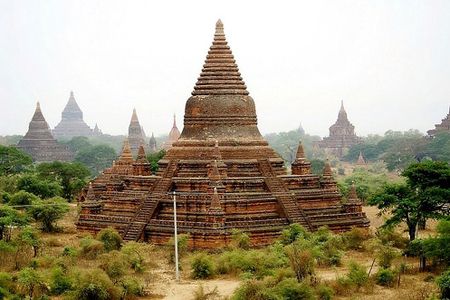
Nathlaung Kyaung Temple is a Hindu temple dedicated to Vishnu, located inside the city walls of Old Bagan. It is the only Hindu temple in Bagan and is situated to the west of the Thatbyinnyu Temple. The temple’s design features classic Hindu architecture, with intricate carvings of gods and deities. It is a reminder of the religious diversity that existed in Bagan before Buddhism became dominant. Nathlaung Kyaung Temple stands as a significant historical site, offering a glimpse into the region’s pre-Buddhist past. It remains a key cultural and spiritual landmark in Bagan.
Best time to visit Bagan
The winter season in Bagan lasts from November to February. The weather is pleasant and rainfall is low, making it the best time for tourists to visit. The summer season, from March to May, is very hot and dry. If visiting during this time, it’s important to bring sun hats, UV protection umbrellas, mosquito repellent, and moisturizing spray to avoid sunburn and insect bites. The monsoon season runs from June to October, with cooler temperatures but heavy rain. This makes roads slippery, so extra caution is needed.


